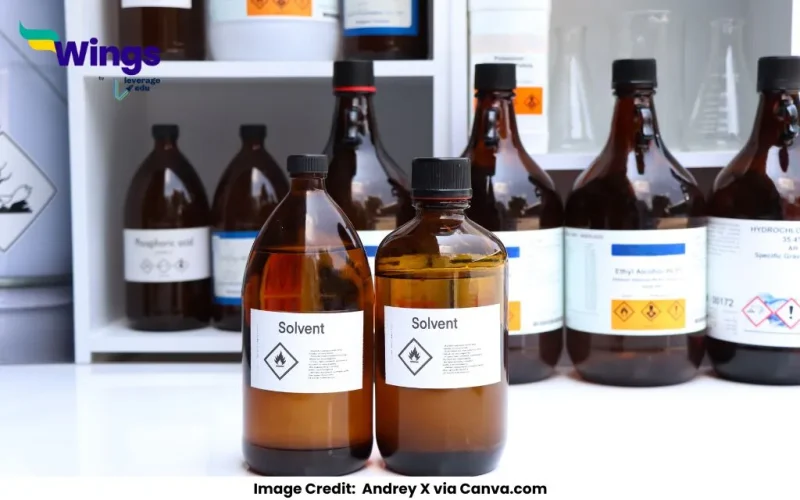Polar protic solvents have hydrogen atoms bonded to highly electronegative atoms (like O or N), enabling hydrogen bonding (e.g., water, alcohol). Polar aprotic solvents lack such hydrogen atoms but have high polarity (e.g., acetone, DMSO).
Keep reading to know what do you mean by polar protic and polar aprotic solvents.
Complete Answer:
What are Polar Protic Solvents?
Polar protic solvents are a class of solvents that have a hydrogen atom attached to an electronegative atom, such as oxygen or nitrogen. This hydrogen can participate in hydrogen bonding, making these solvents capable of donating protons (H⁺).
Key Characteristics of Polar Protic Solvents:
- Hydrogen Bonding: They can form hydrogen bonds because of the presence of O-H or N-H bonds.
- Polarity: These solvents are polar, meaning they have a significant dipole moment.
- Proton Donation: Due to their hydrogen bonding ability, they can stabilise ions, particularly anions, by hydrogen bonding.
Examples of Polar Protic Solvents:
- Water (H₂O): Strongly polar protic solvent.
- Ethanol (C₂H₅OH): Common in organic reactions.
- Methanol (CH₃OH): Often used in lab reactions.
- Acetic acid (CH₃COOH): A weaker protic solvent.
Applications of Polar Protic Solvents:
- Dissolution of Ionic Compounds: Polar protic solvents are good at dissolving salts because they can stabilise ions.
- SN1 Reactions: Favor SN1 reactions as they stabilise carbocations through solvation.
- Proton Donor in Acid-Base Chemistry: Used in reactions requiring acidic conditions.
What are Polar Aprotic Solvents?
Polar aprotic solvents are a class of solvents that are polar (they have a significant dipole moment) but lack an acidic hydrogen atom capable of forming hydrogen bonds. Unlike polar protic solvents, they cannot donate protons but can still dissolve ionic and polar compounds due to their polarity.
Key Characteristics of Polar Aprotic Solvents:
- No Hydrogen Bonding: They do not have O-H or N-H bonds, so they cannot form hydrogen bonds with solutes.
- Polarity: Highly polar due to a significant dipole moment, often caused by electronegative atoms.
- Stabilisation of Cations: They solvate cations effectively through lone pairs of electrons on electronegative atoms but do not solvate anions well.
Examples of Polar Aprotic Solvents:
- Dimethyl Sulfoxide (DMSO): (CH₃)₂SO
- Acetone: CH₃COCH₃
- Acetonitrile (CH₃CN): Used in many chemical reactions.
- Dimethylformamide (DMF): HCON(CH₃)₂
- Tetrahydrofuran (THF): C₄H₈O
Applications of Polar Aprotic Solvents:
- SN2 Reactions: Favor SN2 reactions as they do not stabilise anions, leaving nucleophiles “free” to attack electrophiles.
- Dissolution of Ionic Salts: Useful for dissolving salts where cation stabilisation is important.
- Reactions Requiring High Polarity: Common in organic synthesis and as reaction mediums.
Common Doubts:
 60,000+ students trusted us with their dreams. Take the first step today!
60,000+ students trusted us with their dreams. Take the first step today!


 One app for all your study abroad needs
One app for all your study abroad needs










